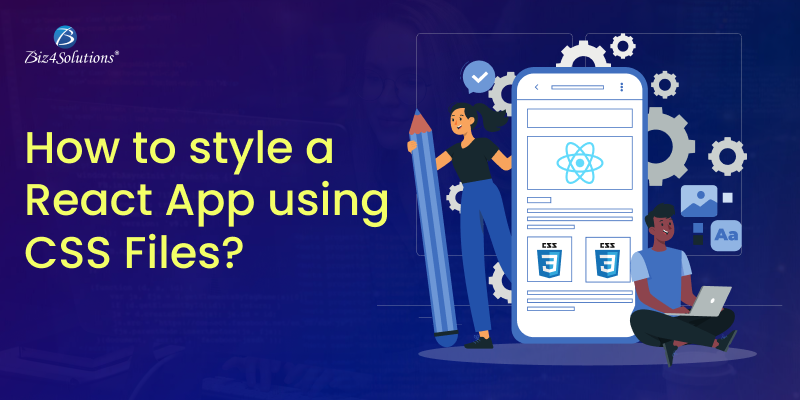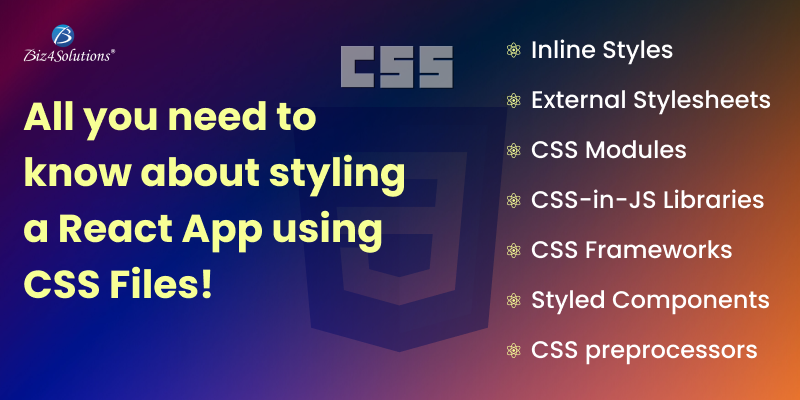Tips to Pick the most suitable Blockchain Development Company for your Upcoming Project?


Blockchain app development is increasingly gaining attention, and contemporary discussions are abuzz with the term “Blockchain business models.
Here are compelling data points on the adoption of Blockchain compiled by the reputable online platform techjury.net:
- By March 2022, the number of registered Blockchain wallets surpassed 81 million.
- Projections indicate that the global revenue from the Blockchain market is expected to reach around 20 billion by 2024.
- Utilizing Blockchain solutions can enable banks to reduce their infrastructure costs by 30%.
- The implementation of Blockchain has the potential to save finance firms up to $12 billion annually.
- According to healthcareweekly.com, 40% of healthcare executives identify Blockchain development as one of their foremost priorities
The statistics mentioned above underscore the surging popularity and vast potential of Blockchain application development. Unquestionably, enterprises spanning various industries are harnessing the capabilities of decentralization, immutability, transparency, and robust security provided by Blockchain solutions.
Nevertheless, integrating Blockchain is a complex undertaking. Consequently, a majority of businesses adopting this groundbreaking technology are turning to expert Blockchain development services for assistance. However, selecting the most suitable Blockchain development agency is also a challenging endeavor. Here are specific tips and considerations to keep in mind when choosing Blockchain services.
Checklist to Select Blockchain Development Services
Avail of Consultation by Blockchain Experts
Do you possess an outstanding concept for your Blockchain development project and are eager to see it come to fruition? Well, the process is more intricate than it may seem. Implementing Blockchain involves greater complexity compared to other technologies, and a single misstep can jeopardize your project’s objectives. Given the substantial time and expenses associated with Blockchain app development projects, there is no room for errors. It is imperative to validate the feasibility, accuracy, and efficacy of your project idea before diving in. Additionally, a comprehensive understanding of how a Blockchain solution operates and its potential benefits for your business is crucial. This knowledge will enable you to formulate a practical vision for Blockchain development and determine whether your business truly requires a Blockchain solution. Moreover, outlining your Blockchain-based project’s vision in advance is essential. This ensures that you can articulate your specific requirements clearly to the Blockchain developers tasked with executing your project. These considerations underscore the necessity of seeking Blockchain consultation services from professionals well-versed in Blockchain projects.
Seeking guidance from experts proves advantageous not just during the initial ideation phase but throughout the entire product development lifecycle. Therefore, it is crucial that the Blockchain app development company you select offers consultation services across all stages of the project. If your technology partner merely executes your idea without validating or improving it, challenges may arise in the later phases of the project. A reputable Blockchain agency will furnish you with a dedicated team of consultants. These professionals will steer you in the right direction and assist you in comprehending the implications of Blockchain implementation on your business.
The consultation process begins with Blockchain experts discussing the project idea alongside clients from the project’s outset. They grasp the intricacies of the idea, your requirements, and the desired outcomes from the envisioned Blockchain solution. Following this, consultants assess the idea’s effectiveness, aligning it with your needs. They then provide practical advice on implementing the envisioned project model, offering suggestions to enhance its productivity. Consultants recommend an approach and a product development roadmap that seamlessly aligns with your Blockchain solution requirements. Moreover, they propose effective strategies for implementing any necessary project updates based on client input.
Choose Quality Over Cost
Opting for a budget-friendly Blockchain development vendor may not yield positive results in the long term. Successful Blockchain app development demands significant technical knowledge, expertise, innovation, and experience. Choosing low-cost resources might mean sacrificing these essential prerequisites, potentially leading to issues with your product. Moreover, if a comprehensive project overhaul becomes necessary later on, the expenses incurred can be substantial. Hence, it is essential to place a higher priority on quality than on cost.
Check the Technical Expertise, Necessary Skillsets, & Efficiency
Successful implementation of Blockchain necessitates in-depth knowledge and extensive experience to ensure productive outcomes. Without the requisite skillsets and technical expertise, your Blockchain resources may lead to costly mistakes. Therefore, it is crucial to thoroughly evaluate your Blockchain service provider’s offerings.
Conduct thorough research to gather insights into the Blockchain agency’s approach, perspective, and the technology stacks they specialize in. A reputable Blockchain development service should boast a versatile team comprising skilled Blockchain developers, including specialists in software development and smart contracts. Typically, Blockchain resources should be adept at working with programming languages such as Angular, Node.js, JavaScript, Solidity, and technology stacks like IPFS, Hardhat, Truffle, Metamask, etc.
Some of the highly sought-after Blockchain use cases encompass smart contracts, DeFi, DAO, DApps, crypto wallet integration, cross-border payments, and more. Additionally, it’s essential to ensure that your Blockchain app development vendor stays abreast of the latest trends and adheres to industry-standard practices.
Gathering such information can be achieved by exploring the company’s website, reviewing their portfolio and past projects. Delve into case studies, blogs, articles, and success stories for valuable insights. Don’t forget to inquire about your technology partner’s coding standards and practices, project management techniques, their approach to handling mid-project changes, and how they navigate crisis situations.
Domain-specific Experience
In the current landscape, the application of Blockchain extends beyond the realms of finance and banking, emerging as a transformative force in various industries such as healthcare, real estate, supply chain, aviation, and more. Therefore, it is essential to verify whether the agency you intend to engage for your project possesses prior experience in Blockchain app development within your specific industry. A seasoned team will possess a deep understanding of industry-specific requirements and have the capability to craft intuitive and user-friendly interfaces. This domain-specific expertise can serve as an added advantage in shaping your project idea into a successful solution.
Established Blockchain app development services, having spent a considerable amount of time in the market, are attuned to market trends and industry best practices. Additionally, they are adept at navigating complex developmental challenges and can offer valuable insights and recommendations related to Blockchain development.
Custom Blockchain App Development
Out-of-the-box, pre-determined, or pre-structured Blockchain solutions may not always align with a business’s objectives or address its pain points effectively. In cases where a business structure is intricate, a tailored approach becomes essential. If your business falls into this category, opt for a Blockchain app development vendor capable of comprehending and scrutinizing your distinct requirements. Choose a partner that can propose a Blockchain solution specifically tailored to fulfill your unique goals. It would be advantageous if your technology collaborator can create a whitepaper to document the customized design specifications that will be implemented.
Agile Methodology
In contemporary development practices, the preference leans towards an agile methodology rather than a fixed prototype model. Agility provides the necessary flexibility for evolution, continuous improvements, last-minute modifications based on current market requirements, and the implementation of post-launch updates to stay relevant. The agile model involves breaking down the product development process into short sprints. In essence, instead of developing and deploying the product in one go, it undergoes gradual development following a step-by-step methodology.
A best practice in Blockchain app development involves initially creating an MVP (Minimum Viable Product). An MVP allows you to validate the product’s effectiveness, identify areas for improvement, and assess whether it aligns with your objectives. Based on these considerations and ongoing market trends, decisions are made regarding add-ons and enhancements to be incorporated in subsequent sprints. This iterative approach ensures that the end product evolves in response to requirements and changing market demands. Therefore, it is crucial that the Blockchain app development company you select supports an agile product development process.
Performance & Scalability
The fate and potential for future growth of a Blockchain app solution post-launch hinge on two critical factors: performance and scalability. It is imperative that your chosen Blockchain development firm adheres to these requirements. Over time, the user base is likely to grow, leading to increased load and processing time, placing additional strain on system resources. Consequently, every Blockchain solution must be designed with scalability in mind to effectively manage the anticipated increase in load.
To ensure optimal performance and scalability, it is recommended to communicate with the hired Blockchain agency and emphasize the need for scalable and high-performing solutions. Your development partner should utilize a flexible programming language capable of executing both parallel and non-parallel system operations. The system itself should possess the capability to maintain an optimal level of responsiveness and speed.
Dedicated Team of Blockchain Developers
The complexity inherent in Blockchain app development projects is substantial, making the concept of shared teams less practical. A team juggling multiple projects simultaneously may struggle to maintain focus on your specific project, requiring frequent reminders about project goals. Additionally, shared teams could potentially result in time constraints, leading to overlooked requirements, insufficient product testing, missed deadlines, and other challenges. Therefore, before finalizing the project agreement, it is essential to ensure that the Blockchain development firm commits to providing a dedicated team of developers, testers, and quality assurance professionals exclusively focused on your project.
Pricing Models
Before finalizing the Blockchain development company, evaluate the pricing models they offer to determine the most suitable option for your needs. Check for the availability of the pricing model that aligns with your preferences. In instances where multiple pricing plans are available, select the one that best matches your project development requirements. Typically, Blockchain agencies present two primary pricing models: the ‘Fixed’ pricing model and the ‘Variable’ pricing model, with some companies also offering the ‘Milestone’ pricing model.
The ‘Fixed’ pricing model entails pre-determined costs without additional expenses later on. This model is cost-effective and is an excellent choice for projects with tight budgets and strict deadlines. However, it requires a clear and well-defined project scope and may not be ideal for highly customized or advanced product functionalities.
The ‘Variable’ pricing model operates on hourly or daily rates and may incur additional expenses during the development process. While it tends to be more costly, it ensures quality and accommodates customization requirements for the end product. The variable pricing model is recommended when the project scope is not clearly defined initially, and development requirements are expected to evolve over time.
The ‘Milestone’ pricing model is utilized in long-term partnerships between the client and the vendor company. It involves adjustable budget frames, with a separate cost estimation defined for each milestone based on specific needs.
Security Practices
Security is paramount for any business, and it is a fundamental reason for the adoption of Blockchain solutions. While the Blockchain ecosystem inherently provides security, the addition of an extra security layer is essential to ensure tamper-proof solutions. Every reputable Blockchain app development company incorporates security measures such as two-factor authentication, safety filters, and more.
Work Ethics
Impressive work ethics are imperative for a Blockchain app development company. Having dedicated, committed, goal-oriented, and reliable teams can significantly impact the project’s success. To gauge your chosen partner’s work ethics, delve into their past client interactions through research. Desirable qualities include the ability to meet strict deadlines, maintain transparency in product development, and provide regular project updates to keep the client informed.
Post-deployment Support
Despite extensive testing before deployment, a Blockchain solution might encounter issues after going live. Therefore, post-launch technical support is essential for addressing real-time bugs, implementing necessary modifications, and ensuring the smooth functioning of Blockchain-based end products. This ongoing support not only maintains the integrity of the end product but also safeguards your brand’s reputation. It is crucial to select a Blockchain app development firm that offers live technical support after the product launch.
Are You Interested in Building a Top-Class Website or Mobile App?
Final Thoughts:
I trust that the tips and strategies mentioned above will assist you in selecting the most suitable Blockchain app development company for your upcoming project. After you’ve narrowed down your choices based on project requirements and the team’s app development experience, it’s pivotal to engage in the essential project discussion phase. During this stage, ensure clarity regarding the product’s vision, articulate your goals precisely, and convey specific requirements. It’s crucial to engage in a thorough discussion about the project’s budget to prevent unexpected costs in the later stages.



